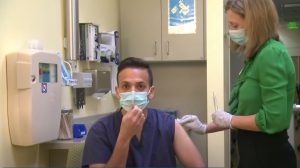NEW YORK (Reuters Health) – When oral administration of midazolam is problematic for sedating children undergoing laceration repair, intranasal or buccal delivery via aerosol is a useful alternative, according to a report in the Annals of Emergency Medicine online June 21.
Dr. Eileen J. Klein and colleagues with the Seattle Children’s Hospital in Washington, note that oral midazolam is commonly used for sedation of children during minor procedures in the emergency department. While administration of intranasal midazolam drops has not been well tolerated, they point out, aerosolized administration to mucosal surfaces may cause less discomfort.
To test this, the team compared the effects of oral midazolam with midazolam delivered by an atomizer device either intranasally or to the buccal surfaces in 169 children requiring laceration repair. Their median age was 3.1 years.
After sedation, levels of distress based on CHEOPS (Children’s Hospital of Eastern Ontario Pain Score) at the start of the repair procedure were 9 points in the oral group, 7 in the buccal group and 8 in the intranasal group, the investigators found. The difference between oral and buccal administration (ie, -2) was significant (p=0.04) but the -1 difference between oral and intranasal delivery was not (p=0.08).
On the other hand, sedation onset was faster with intranasal administration and more patients in this groups achieved adequate sedation (85.5%) than with oral delivery (66.7%) or buccal administration (59.6%).
However, intranasal administration was the least readily accepted route of delivery, according to the report.
Nonetheless, intranasal midazolam may be the preferred method of delivery, Dr. Klein and colleagues conclude. “Despite the irritation of administration, aerosolized intranasal midazolam is a quick and effective method of sedating children for laceration repair.”
They add, “Aerosolized midazolam (whether buccal or intranasal) is an effective alternative sedation option for laceration repair in children.”
Reference:
A Randomized Clinical Trial Comparing Oral, Aerosolized Intranasal, and Aerosolized Buccal Midazolam
Ann Emerg Med. 2011




